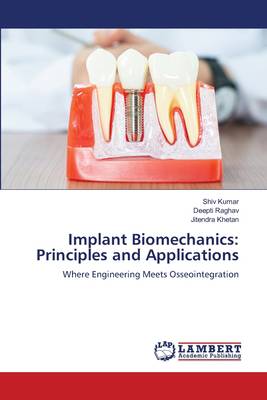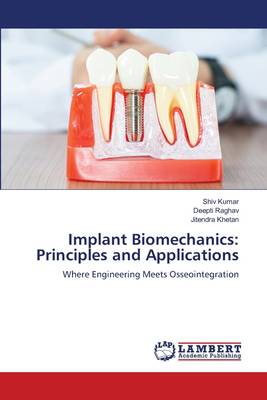
- Afhalen na 1 uur in een winkel met voorraad
- Gratis thuislevering in België vanaf € 30
- Ruim aanbod met 7 miljoen producten
- Afhalen na 1 uur in een winkel met voorraad
- Gratis thuislevering in België vanaf € 30
- Ruim aanbod met 7 miljoen producten
Implant Biomechanics
Principles and Applications
Shiv Kumar, Deepti Raghav, Jitendra Khetan
Paperback | Engels
€ 107,45
+ 214 punten
Omschrijving
Biomechanics plays a crucial role in implant dentistry by applying engineering principles like statics, dynamics, and stress analysis to manage chewing forces. Implants must handle vertical and lateral loads while minimizing stress on surrounding bone. Improper angulation or overload can lead to bone loss or implant failure, while too little stress may cause bone atrophy. Optimal outcomes depend on firm bone-implant contact and minimal micromotion.Patient-specific factors such as bone density, occlusion, and force magnitude guide implant design. More implants, wider diameters, and strategic placement help distribute stress effectively. Reducing cantilever length, increasing surface area, and precise angulation are key to avoiding biomechanical overload.Finite Element Analysis (FEA) helps simulate stress distribution, but limitations remain. With ongoing advancements in implant design, the goal is clear: to achieve long-term success by aligning mechanical stability with biological integrity.
Specificaties
Betrokkenen
- Auteur(s):
- Uitgeverij:
Inhoud
- Aantal bladzijden:
- 132
- Taal:
- Engels
Eigenschappen
- Productcode (EAN):
- 9783659636622
- Verschijningsdatum:
- 8/07/2025
- Uitvoering:
- Paperback
- Formaat:
- Trade paperback (VS)
- Afmetingen:
- 152 mm x 229 mm
- Gewicht:
- 185 g

Alleen bij Standaard Boekhandel
+ 214 punten op je klantenkaart van Standaard Boekhandel
Beoordelingen
We publiceren alleen reviews die voldoen aan de voorwaarden voor reviews. Bekijk onze voorwaarden voor reviews.










